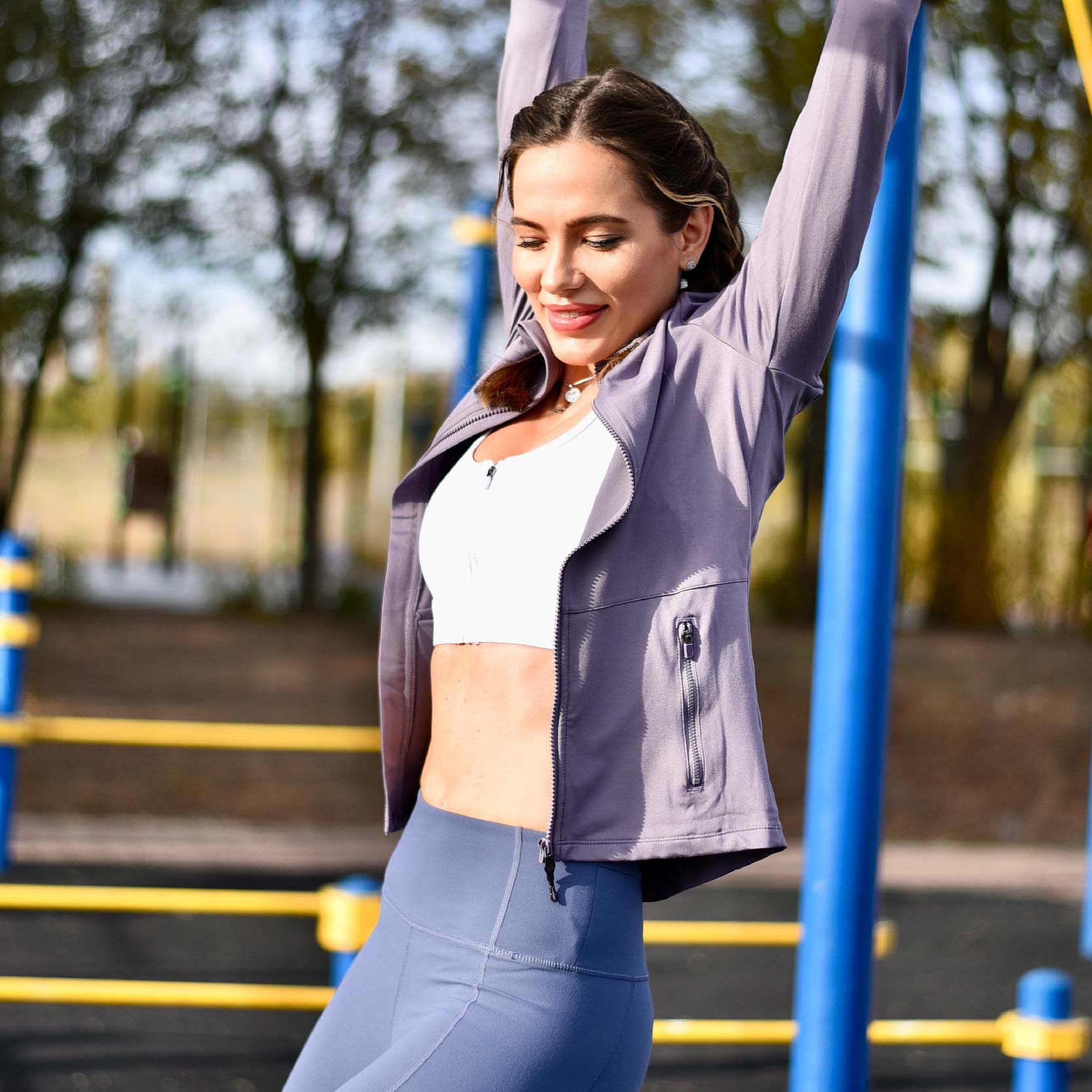Yoga for Beginners: 7 Tips for Starting Yoga for the First Time
If you are considering getting into yoga, you should start right away. There are different types of yoga, and all have their benefits and drawbacks. But if you're a beginner, we recommend a gentle style like Hatha yoga.
In the article below, we'll walk you through how to start your first yoga class confidently. We will show you how to find a class with good beginner-level practice and elaborate on some of the best yoga poses.
7 Tips for Starting Yoga for the First Time
Yoga is a very popular form of exercise and has a lot of health benefits, like reducing stress and improving flexibility, strength, and endurance.
Starting yoga for the first time can be intimidating, but it does not have to be. Here are seven tips to assist you in getting started with yoga:
1. Look for a good teacher
The initial step is to find a good yoga class you enjoy and can learn from. Beginners may find it difficult to do this, but once you think you have found a great yoga instructor, stick with them.
Don't be intimidated by yoga.
It is not an exclusive club meant only for the most spiritually evolved people in the world. Yoga is available to anyone who wishes to try it.
2. Listen to your body
As you are just getting into yoga, it is a good idea to listen to your body and try to focus on your breath.
Breathing is critical in yoga poses; it takes practice before you can do it correctly. A proper breathing technique is essential to stay relaxed and maintain proper body alignment in poses. These things will help you relax and get the mood needed for a good yoga class.
If you have an injury or discomfort, do not push yourself beyond that threshold at first.
Go with the flow of the moment, knowing you can always push your limits later on when you feel more comfortable with the movements and have gotten used to being in a yoga pose for a longer period.
3. Start with beginner classes
It is crucial to start with a beginner class. If you go to a more advanced class, you'll likely be a newbie in that environment too, which can be overwhelming. Learning is easier when you are not faced with the same challenges.
Advanced classes are good for building athletic strength and balance but tend to have too much intensity for beginners. A beginner's class will help you build up your ability so that it is manageable when you go on to the next level of yoga, which we'll get into in a bit.
4. Understand yoga philosophy
The core of yoga philosophy is the belief that a higher power exists.
You might not understand it immediately, but it will become clearer with time. Yoga is an ancient art form with some timeless teachings you should know as a beginner.
The main thing to remember is that yoga is more than just getting a good workout. It's a way of living life as opposed to just existing.
What keeps you returning to yoga is likely the same thing that will help you stick with it in the long term: the deep-seated belief that there is more to life than meets the eye.
As you progress, this belief will be your cornerstone.
5.The yoga mat provides a sacred zone
Using a yoga mat can help create a sacred space for your practice. It can serve as a visual reminder of your commitment to your practice and provide a sense of calm and peace during your practice.
6.Maintain hygiene with a yoga mat
A yoga mat provides a hygienic surface for your practice. It is easy to clean and can help prevent the spread of germs and bacteria. You may practice on a clean or sanitary surface with a mat, which can harm your health.
7.Better grip
A good quality yoga mat provides a better grip than a bare floor, which is particularly helpful for performing certain poses such as downward-facing dog, where your hands and feet must stay firmly planted on the ground. The mat's texture and grip give you a better foothold, allowing you to hold poses longer and more easily.

5. Be patient and consistent
A good tip for any beginner in anything they try out is to be patient and consistent. Many successful yoga practitioners have spent years perfecting their moves, so expect results to be on time. It may also be too boring to stick with it for a long.
When you start a yoga routine, the results will come, and you'll see improvements in your physique, flexibility, and strength. The best thing about yoga is that these benefits are merely bonuses.
Another important thing to remember in yoga is that comparison only leads to misery. There are people of different ages and skill levels in every class you take, and they have their challenges when trying to master yoga poses.
6. Learn how to be still
One of the ultimate parts of yoga is that you can sit still. Most people have too much going on, and they often find it difficult to sit still, but in yoga, there is a huge emphasis on being able to do that.
It may give you mental clarity and make you more focused at work or school.
It may be hard at first, but with time, it gets easier because you learn how to sit still in any situation, even when there are a lot of distractions around you. The key is not to fight those distractions and accept that they happen but rather just let them slide by without getting caught up in them.
7. Practice basic yoga poses
The last tip on our list is something that we always recommend to beginners. It will help if you practice basic yoga poses so that you get comfortable with them in a very short time.
It is possible to go through the entire beginner's program without ever touching advanced Yoga poses, but you will have missed out on some significant benefits you can only get from the basics.
It is one thing that will take time to master in the long run, but it is more important to take this step right away because it will save you a lot of headaches down the road.
The basic poses are essential things that anyone should know before continuing their yoga training.
If you need to be more familiar with these poses, the next section will help you.

Yoga poses for beginners
Beginners can emulate these beginner poses to get started with yoga. However, remember that you can grasp only some of the poses. Move along with what works best for you.
Here are the ultimate yoga poses for beginners, their details, and how to do the process.
1. Downward facing dog/Adho Mukha Svanasana
Beginners might find this pose similar to planks. It is one of the essential poses in yoga that helps increase flexibility, works on your posture, and helps you get a better balance.
You begin the downward-facing dog pose by placing your hands on the ground and pushing your hips up. The toes, arms, legs, and back must all be in a straight line, with your head resting between your arms and facing the knees.

2. Mountain pose/Tadasana
The mountain pose is one of the most important poses in yoga. It helps relieve stress, increases flexibility, and trains your balance.
Place your toes on a mat or the floor, stretch your arms before you, and relax your shoulders. Stand with your feet close, toes pointed forward, and arms stretched out in prayer or by the side. Ensure the arms are parallel with your ears while doing this pose.

3. Warrior 1/Virabhadrasana I
The Virabhadrasana pose strengthens your core muscles and stretches the sides of the body. It is a one-legged version of the Mountain pose, with one arm stretched in front and the other placed to the side. While standing in Tadasana (Mountain Pose), raise one leg while extending it straight out to the side with firm thigh muscles to align parallel to the floor with toes pointing directly ahead.

4. Triangle pose/Trikonasana
It is a great beginner pose. It helps raise your heart rate and strengthen the hips, thighs, and core muscles. It also stretches your shoulders and opens up your chest area, improving your posture.
While standing with legs spread slightly apart and feet pointing straight ahead, bring one leg forward with toes pointed towards the ground. Align your feet with your nose pointed towards the ground between your hands on either side of you at shoulder level.

5. Warrior II/Virabhadrasana II
The vigorous pose boosts your balance, strengthens your thighs and hips, and opens your chest area. It is a two-legged version of Warrior 1, with both arms stretched out in front.
The feet need to be 4 feet wide. Put the right foot in 90 degrees while placing the other leg inwards.
While the arms are parallel to the floor and palms facing downwards, bend your right foot. Balance the weight between the legs.

6. Seated Forward Bend
The seated forward bend yoga pose stretches your chest, shoulders, spine, and groin. It is one of the most important beginners poses for women. Sit with the legs bent at a 90-degree angle with the feet together and keep them away in a straight line. Relax your arms so they hang down on both sides of you, and place them across your knees with palms facing forward.

7.Portability
The bridge pose is one of the most important poses for any beginner. It is also one of the most challenging poses for beginners. While on the floor, lie on your back with your arms on your side. Bend your knees and keep the feet flat on the mat or floor surface while two feet distant from the hips. Pull your buttocks up from the floor, and maintain a good hips-knees distance.

8. Reclining twist
While on the floor, place your arms in a T-shape position and rest on the ground surface. Get your knees closer to the chest while spreading your arms out. The knees should be on one side. The pose strengthens your lower back and stretches your shoulders.

9. Waterfall pose
The calming pose enables blood flow to the brain and helps lower the cortisol levels in your body. While on your back, stretch both legs against a wall while resting the arms on the side.

10. Tree/Vrksasana
The tree pose is a balancing exercise. It helps strengthen your abs and legs while stretching your shoulders and arms.
You stand with the legs about 3 feet apart and place one foot on the inner thigh of the other leg. The thigh of the raised feet must face downwards at a 45-degree angle.
Once at a balanced position, bring your hands together in a prayer style before your chest. You can improve the balance by gazing at a fixed point.

11. Locust pose/Salabhasana
The basic locust pose is a great exercise to work on your upper and lower body strength while improving flexibility and balance. It strengthens the lower back and chest areas while stretching the knees with a perfect balance of strength.
Lie down on your stomach, with arms next to the body grasping behind your head. Lift one leg by bending at the knee, bringing it out straight in front of you, parallel to the floor surface, with toes pointed downwards for five deep breaths before changing legs and repeating.

12. Plank pose
The plank pose is familiar to most beginners. With all your fours, put your hands flat on the floor underneath the shoulders. Be on your toes by lifting the knees and stretching the legs behind you. Maintain a neutral position around the neck and spine while facing your head downwards.

13. Cat-cow stretch pose
If the back pains are troubling you, this is the perfect pose. It improves mobility and brings balance and flexibility to your movements.
Begin on all fours while placing your arms and legs shoulder-width apart. While inhaling, lift your tummy by looking forward, keeping the back straight, and spreading your fingers wide apart. While exhaling, round your back upwards by pushing the tummy forward while looking downwards at the floor surface. Perform ten repetitions of these exercises every day for the best results.

14. Raised hands pose
As you maintain a mountain pose, remain your feet on the ground while stretching out your arms to the sky. It gives you a full body stretch and minimizes muscle pains.

Conclusion
Yoga has been one of the ultimate practices for a healthy body and fitness since the beginning. Beginners need not be intimidated to start yoga. Follow the tips and practice at least three poses mentioned above.





